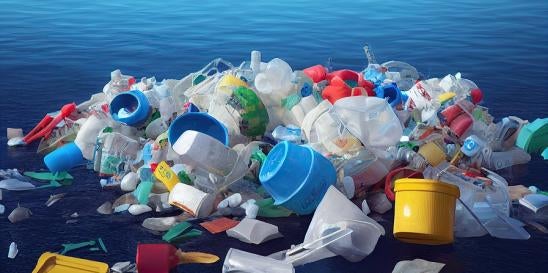On January 11, 2024, the U.S. Environmental Protection Agency (EPA) issued a final significant new use rule (SNUR) to prevent companies from starting or resuming the manufacture (including import) or processing of 329 per- and polyfluoroalkyl substances (PFAS) that are designated as inactive on the Toxic Substances Control Act (TSCA) Chemical Substance Inventory. 89 Fed. Reg. 1822. The final rule notes that persons subject to the final SNUR are required to notify EPA at least 90 days before commencing any manufacture (including import) or processing of the chemical substance for a significant new use. Once EPA receives a significant new use notification (SNUN), EPA must review and make an affirmative determination on the SNUN and take such action as is required by any such determination before the manufacture (including import) or processing for the significant new use can commence. EPA states that such a review “will assess whether the new use may present unreasonable risk to health or the environment and ensure that EPA takes appropriate action as required to protect health or the environment.” The SNUR will take effect March 11, 2024.
Chemicals Subject to the SNUR
The SNUR applies to chemical substances designated as inactive on the TSCA Inventory that are also PFAS, except that inactive PFAS already subject to a SNUR, including but not limited to the SNURs cited at 40 C.F.R. Sections 721.9582 and 721.10536, are not subject to notice requirements under this action to avoid potential redundancies or conflicts between the SNURs.
EPA states that for the purposes of the SNUR, the definition of “PFAS” includes chemicals that contain at least one of these three structures:
- R-(CF2)-CF(R′)Rʺ, where both the CF2 and CF moieties are saturated carbons;
- R-CF2OCF2-R′, where R and R′ can either be F, O, or saturated carbons; or
- CF3C(CF3)R′Rʺ, where R′ and Rʺ can either be F or saturated carbons.
According to the SNUR, EPA developed this definition to focus on substances most likely to be persistent in the environment. EPA notes that this definition may not be identical to other definitions of PFAS used within EPA or by other domestic or international organizations.
The chemical substances subject to the SNUR are the 329 PFAS that are both currently designated as inactive on the TSCA Inventory and that are not subject to an existing SNUR. According to EPA, the specific chemical identities for 30 of these substances that have been claimed as confidential business information (CBI) have generic names that do not contain “fluor” or “fluorine.” EPA states that it is providing a list of the 299 inactive PFAS that do not mask “fluor” or “fluorine” in the generic name in the public docket for the SNUR. Because EPA is providing a structural definition of PFAS for the SNUR, EPA “need not take additional steps to list the 30 inactive PFAS that are not subject to an existing SNUR and whose generic names do not contain ‘fluor’ or ‘fluorine.’”
On October 14, 2022, prior to publication of the proposed SNUR, EPA received a Notice of Activity for Chemical Abstracts Service Registry Number® (CAS RN®) 306-92-3. EPA states that it erroneously included this substance in the initial count and list of the 300 inactive PFAS that do not mask “fluor” or “fluorine” in the supplemental document, “List of Select Chemicals Subject to the Proposed Significant New Use Rule Per- and Poly-fluoroalkyl Chemical Substances Designated as Inactive on the TSCA Inventory.” The designation of this substance was “active” at the time of the proposed rule and, as such, it is not subject to the final SNUR rule and the correct number of chemical substances for which EPA is issuing a final SNUR is 329.
EPA notes that it received one Notice of Activity for CAS RN 35101-47-7 on March 2, 2023, after publication of the proposed rule. Uses arising after January 26, 2023, are significant new uses, however, and persons who began commercial manufacturing (including importing) or processing for a significant new use must cease upon the effective date of the final rule. To resume their activities, these persons must first comply with all applicable SNUR notification requirements and wait until all TSCA prerequisites for the commencement of manufacturing (including importing) or processing have been satisfied.
Significant New Use Determination
TSCA Section 5(a)(2) states that EPA’s determination that a use of a chemical substance is a significant new use must be made after consideration of all relevant factors, including:
- The projected volume of manufacturing and processing of a chemical substance;
- The extent to which a use changes the type or form of exposure of human beings or the environment to a chemical substance;


 i
i


